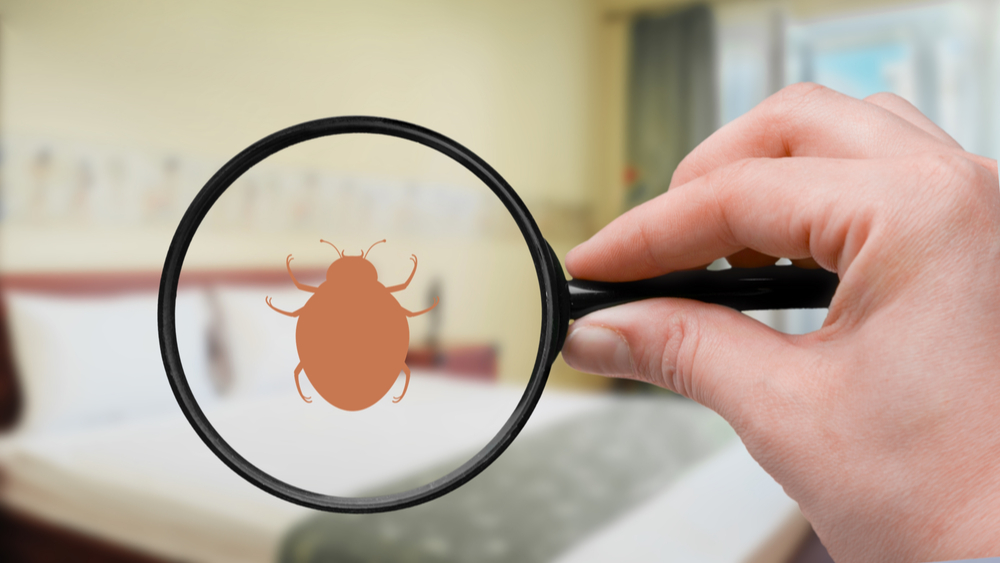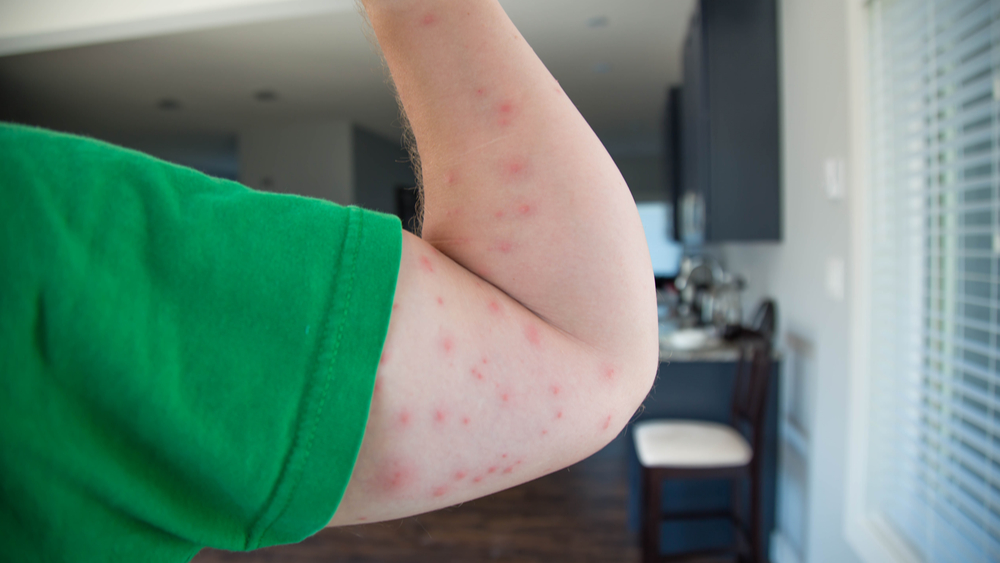
They’re blood-sucking pests that spread like wildfire and stick like glue to whatever home they infest. Still, you have to give bed bugs credit for one thing—they’re survivors:
- A well-fed bed bug can live as long as 300 days in laboratory conditions, and the bugs can survive as long as 70 days with no meal.
- Bed bugs typically feed every 3 to 7 days, and after a blood meal, a female will lay 1 to 7 eggs per day for up to 10 days, about 97% of which hatch successfully.
- The insects cover a lot of ground when they’re active, typically between midnight and 5 a.m., locating their human host by the person’s body heat and CO2 exhalations.
- The parasites may bite the host several times before locating a capillary space that allows them to feed uninterrupted for 5 to 10 minutes at a time.
- Last but not least, bed bugs are excellent travelers, able to hitch rides in people’s clothes, luggage, and furniture. They also crawl inside walls, through floor and ceiling openings, and on pipes.
Where can bed bugs live inside a home in South Florida? Based on their name, you might think the insects would be limited to bedrooms, but bed bugs are equally at home anywhere they can find human prey. And they’ll take their meal whether their victim is awake or asleep.
Adding to the woes these vermin can cause for homeowners is their ability to avoid detection. When they’re not active, bed bugs take shelter in any number of odd locations, including alarm clocks, computers, and other electronic devices. Here’s a guide to the places inside your home that are most likely to harbor bed bugs, how to spot their telltale signs, and why professional pest control services such as Nozzle Nolen are the best option for eliminating the beasts.
How to Identify a Bed Bug: A South Florida Homeowner’s Guide
The first step in spotting bed bugs in your home is to know what they look like.
- Adult bed bugs are less than a quarter-inch long and are brown in color. They appear flat unless they’ve just fed on their prey, after which they puff up like a balloon.
- The nymphs are smaller and white or translucent, much like a book louse nymph, but bed bug nymphs are rounder in shape.
- Bed bug eggs are about the size of a pinhead and are pearly white in color.
Often the first indication of the presence of bed bugs is their bite: the bugs leave large red swollen areas where they bite, much like mosquito or flea bites. In some instances, the victim won’t notice any welts or other indications after a bite, but the itching it causes can lead to a secondary skin infection. You may find small blood stains on bed linens or near the entrance to the bugs’ hiding places.

Where Can Bed Bugs Live?
These are among the areas in your home where bed bugs are most likely to live:
- In the rims and corners of mattresses and the undersides of box springs.
- Inside popcorn ceilings.
- Underneath carpets.
- In couches and upholstered chairs, especially in the seams and stitching.
- Inside duffel bags, book bags, luggage, and other items brought into the house.
- Around crown moldings, baseboards, and electric outlet covers.
- Under loose wallpaper and wall hangings.
- Inside cracks in headboards and bed frames.

How to Prevent Bed Bugs from Making Your Home Their Home
The two most common approaches for eradicating bed bugs are heat treatments and chemical treatments. When comparing the two options, the benefits of heat treatments soon become clear:
- Chemical treatments can be less expensive initially, but they usually require multiple applications. The toxins used in the treatments can be dangerous for small children and pets who are exposed to them.
- Heat treatments are a one-time non-chemical approach that raises the temperature in the area of infestation above 130°F using industrial heaters and fans. As a result, there’s rarely a need for a follow-up treatment, and the approach is safe for families and pets.
Most importantly, a professional pest control service such as Nozzle Nolen will help you prevent future problems with bed bugs or other pests by working with you to identify and eliminate any potential access points. Nozzle Nolen offers a range of services that address specific insect and rodent infestations so they can craft a solution that’s customized to your needs and budget.
Getting Started With Nozzle Nolen
Whether for South Florida homes or businesses in the area, the trained and certified pest control specialists at Nozzle Nolen will make your bed bug problem disappear.
Nozzle Nolen has provided expert pest control services in South Florida for more than seven decades. We love educating just as much as keeping South Florida homes and businesses pest free, and we hope we have answered your question, “Where can bed bugs live?”. If you fear you are facing an infestation or would like more information, give us a call at 800.226.6536 or Contact Us. We look forward to serving you.




